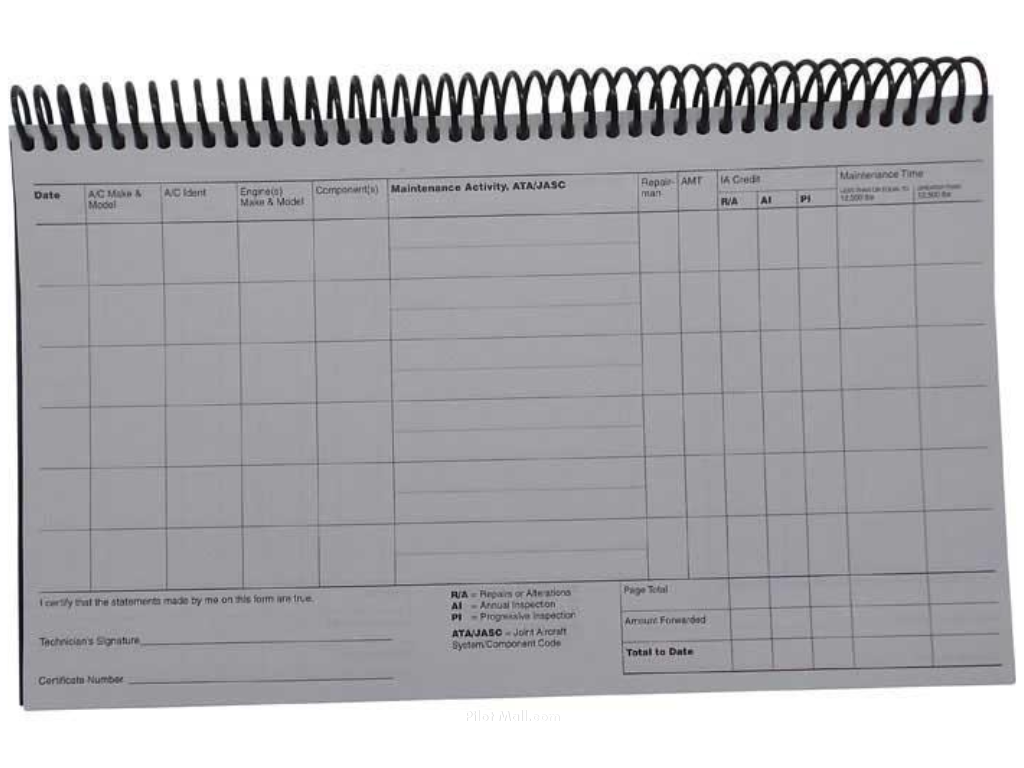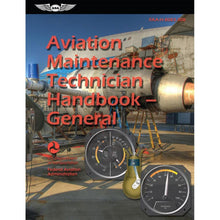What Aircraft Maintenance Can You Do Yourself?

Featured Pilot Gear
Browse our selection of high-quality pilot supplies! Your purchase directly supports our small business and helps us continue sharing valuable aviation content.
Owning a plane is an expensive endeavor, and the initial purchase price is just the beginning. Maintenance costs can quickly add up, making it important for owners to find ways to decrease expenses while still ensuring safety.
One major area of expense is maintenance, as owners are responsible for not only purchasing airplane parts but also covering the hourly labor rate of certified aviation mechanics.
While this makes sense for complex projects that require specialized knowledge and certification, there are simpler tasks such as replacing spark plugs or cleaning and greasing landing gear wheel bearings that owners may be able to do themselves.
This article will delve into the details of what kind of maintenance work can be done by plane owners and how to properly log it.
So if you're willing to get hands-on and save some money in the process, read on!

What is Aircraft Maintenance?
The FAA defines aircraft maintenance programs as "the performance of tasks required to ensure the continuing airworthiness of an aircraft, including any one or combination of overhaul, inspection, replacement, defect rectification, and the embodiment of an alteration or repair."
Types of Aircraft Maintenance
Aircraft maintenance is broken down into four categories: preventative maintenance, maintenance, alterations, and repairs. Read the 14 CFR Appendix A to Part 43 for a full list of what the FAA includes in each of these categories. Depending on the nature of the project, aircraft maintenance can be either scheduled or unscheduled.
Aircraft Preventative Maintenance
The FAA defines preventative maintenance as “simple or minor preservation operations and the replacement of small standard parts not involving complex assembly operations.”
All tasks that fall under the FAA’s “preventative maintenance” umbrella are listed in Section C of the 14 CFR Appendix A to Part 43 (linked above). Part 91 pilots are allowed to do their own preventative maintenance work if they meet certain standards which we will explain later.
Aircraft Maintenance
Part 121 and Part 135 aircraft must be part of a dedicated maintenance program performed by certified aviation mechanics. Within these programs, aircraft receive line maintenance and heavy maintenance grouped into upkeep categories A, C, and D.
Aircraft Alterations
Aircraft alterations, or changes, can be either major or minor. The FAA defines major aircraft alterations as changes to the original aircraft, engine, or propeller specifications that might “appreciably affect weight, balance, structural strength, performance, powerplant operation, flight characteristics, or other qualities affecting airworthiness.”
Major alterations also include changes “not done according to accepted practices” or that “cannot be done by elementary operations.” Any modification not defined as a major alteration is considered minor.
Aircraft Repairs
Major repairs are defined as repairs that “if improperly done, might appreciably affect weight, balance, structural strength, performance, powerplant operation, flight characteristics, or other qualities affecting airworthiness.”
Like major alterations, major repairs include that that are “not done according to accepted practices” or that “cannot be done by elementary operations.” All other repairs are considered minor.

Who Can Perform Aircraft Maintenance?
In 14 CFR § 43.3, the FAA lists who can work on planes. They detail the type and scope of work that each person is authorized to complete based on the certificate they hold and their relationship to the aircraft being maintained. In all cases, the person must be able to “perform the work satisfactorily and safely.”
All categories of aircraft maintenance can be performed by:
- The holder of a mechanic certificate
- The holder of a repairman certificate
- A person working under the supervision of a holder of a mechanic or repairman certificate
- The holder of a repair station certificate under part 145
- The holder of an air carrier operating certificate or an operating certificate issued under Part 121 or 135
Certain types of aircraft maintenance can be performed by:
- The holder of a pilot certificate issued under part 61

Can I do Maintenance on my Own Airplane?
If you’re a licensed pilot wondering whether you can do your own maintenance, the short answer is “yes.” The caveat is that per the 14 CFR 43.3 regulations, unless you are also a certified aviation maintenance technician or repairman, the only category of maintenance the FAA will allow you to perform is preventative maintenance.
You can do preventative maintenance work on your own aircraft and other aircraft you operate. Just remember you can’t legally work on your buddy’s plane under these provisions unless you also operate that aircraft.
Also, any aircraft that is worked on under a Part 61 pilot certificate authorization cannot be flown under part 121, 127, 129, or 135.
What Aircraft Maintenance Can I do Myself?
As a Part 61 private, sport, or higher certificate pilot, you know you that the FAA lets you do prescribed types of preventative maintenance which “does not involve complex assembly operations,” but what kind of jobs does that include?
The most common aircraft maintenance items you can tackle yourself are listed below. Before getting started, double check that the maintenance activity you’re about to perform is listed in CFR Part 43, appendix A, paragraph (c). If it’s not there, it does not count as preventative maintenance, and you will need to hire a certified professional to do the job or supervise your work.
Prepare by using the FAA’s sample preventative maintenance checklists that walk you through what to look for on the propeller, engine, cabin, fuselage and empennage, wings, landing gear, functional flight items, and general aircraft flight readiness. A copy of the ASA’s Aviation Mechanic Handbook is another valuable reference tool for the DIY airplane mechanic.
FAA-defined preventative maintenance includes but is not limited to:
- Removing, installing, and repairing landing gear tires.
- Servicing landing gear wheel bearings (for example, cleaning and greasing).
- Servicing landing gear shock struts (for example adding oil, air, or both).
- Replacing defective safety wire or cotter keys.
- Lubricating items not requiring disassembly other than removal of nonstructural items (for example, cover plates, cowling, and fairings).
- Replenishing hydraulic fluid in the hydraulic reservoir.
- Applying preservative or protective material to components where no disassembly of any primary structure or operating system is involved, and where such coating is not prohibited or contrary to good practices.
- Making small simple repairs to fairings, nonstructural cover plates, cowlings, and small patches and reinforcements not changing the contour so as to interfere with proper air flow.
- Replacing side windows where that work does not interfere with the structure or any operating system such as controls, electrical equipment, etc.
- Replacing safety belts.
- Replacing seats or seat parts with replacement parts approved for the aircraft, not involving disassembly of any primary structure or operating system.
- Trouble shooting and repairing broken circuits in landing light wiring circuits.
- Replacing bulbs, reflectors, and lenses of position and landing lights.
- Replacing or cleaning spark plugs and setting spark plug gap clearance.
- Replacing any hose connection, except hydraulic connections.
- Replacing prefabricated fuel lines.
- Cleaning or replacing fuel and oil strainers or filter elements.
- Replacing and servicing batteries.
- Making simple fabric patches not requiring rib stitching or the removal of structural parts or control surfaces.
- Replacing any cowling not requiring removal of the propeller or disconnection of flight control.
- Removing and replacing self-contained, front instrument panel-mounted navigation and communication devices that employ tray-mounted connectors that connect the unit when the unit is installed into the instrument panel, (excluding automatic flight control systems, transponders, and microwave frequency distance measuring equipment (DME)).
- (Note: The approved unit must be designed to be readily and repeatedly removed and replaced, and pertinent instructions must be provided. Prior to the unit's intended use, an operational check must be performed in accordance with the applicable sections of part 91 CFRs).
Pro Tip: Updating your plane’s digital avionics database is another preventative maintenance item you can do yourself. According to an airframe and power-plant mechanic (A&P) interviewed by Flying Magazine, DIY chart updates can save you hundreds of dollars a year.

How to Log Preventative Maintenance
Just like a professional aviation maintenance technician, you must properly document all maintenance you perform using your aircraft’s maintenance logbook. Use the engine log for engine maintenance and the airframe log for airframe maintenance items.
Each entry should include the date the work was completed, a description of the work performed, your signature, and your relevant certificate number and type authorizing you to do the work.
For part 61 pilots working on their own planes, your pilot certificate number is your authorization. Protect your maintenance log just as you would your pilot log by keeping it in a logbook cover or logbook case.

Becoming an AMT
Want to take on more advanced aircraft projects yourself? If you enjoy working on planes and want to take it to the next level, consider becoming an aviation maintenance technician. As an AMT, you will get paid for your work and have the authorization to perform all kinds of maintenance on a variety of aircraft.
Would-be aviation mechanics can start studying with the ASA 2022 AMT general test guide. You will also want to secure a dedicated AMT logbook to keep track of all your maintenance experience.

Frequently Asked Questions
- Can I change my own oil as a pilot?
- Yes, for Part 91 operations, changing the oil and replacing the oil filter is considered preventative maintenance that an owner-operator can perform.
- Do I need a mechanic to sign off on my preventative maintenance?
- No. If you are authorized to perform the work (as an owner with a private pilot certificate or higher), you can sign the logbook entry yourself. You must include your pilot certificate number and signature.
- Can I perform maintenance on a friend’s airplane?
- Generally, no. The FAA regulation (14 CFR 43.3) allows you to perform preventative maintenance only on an aircraft that you own or operate. You cannot perform maintenance on an aircraft belonging to someone else unless you hold a mechanic certificate.
- What happens if I mess up a repair?
- You are responsible for ensuring the work is done satisfactorily and safely. If you are unsure about a task, it is always best to hire a certified A&P mechanic to perform the work or supervise you.
More Reading for Airplane Owners and Soon-to-be-Owners
- Aircraft Inspection: Guide to Keeping Your Plane Safe
- Airplane Pre-Buy Considerations – What you need to know before you purchase
- Aircraft Brakes: The Ultimate Guide for Airplane Brakes
- Aircraft Squawk Sheet (What Is It and How do You Use It?)
Your Turn
What type of aircraft owner are you? Do you prefer to do it yourself or would you rather pay the professionals? In the comments below share which preventative airplane maintenance tasks you DIY and which you outsource.
Did you find this article helpful?
Do you think we missed anything important? Let us know in the comments below!







